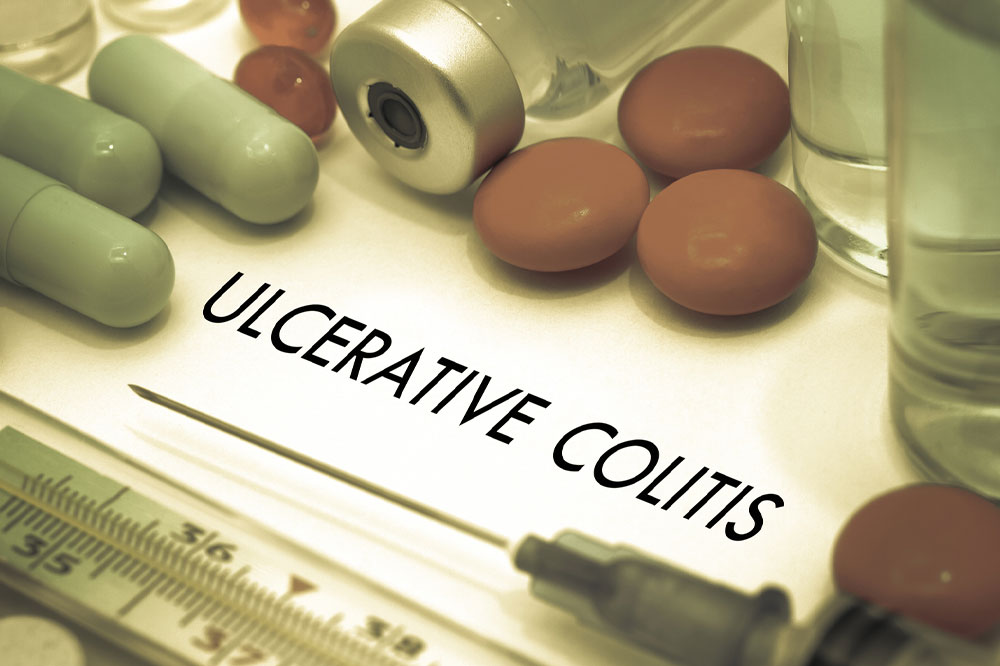
Signs and complications of ulcerative colitis
Ulcerative colitis (UC) is an inflammatory bowel disease that affects the innermost lining of the large intestine (colon) and rectum, causing sores, ulcers, and bleeding. Symptoms for this condition generally develop between the ages of 15 and 30 or between 50 to 70. The condition develops in flare-ups and then may disappear for weeks or months at a time. Here are some of the early signs of ulcerative colitis one may observe:
Diarrhea
One of the early signs of ulcerative colitis that people notice is watery diarrhea combined with a frequent and sudden urge to pass bowel movements. One may feel the need to pass bowel movements up to 10 times a day, and this can significantly affect their daily life. For those living with UC, uncontrollable diarrhea could lead to medical emergencies like severe dehydration, perforated colon, or sepsis.
Rectal bleeding
Those with UC may also experience blood or mucus in their stools, especially during a flare. This is because the blood from the ulcers reaches the surface of the rectum. One should consult a doctor immediately after observing this symptom.
Abdominal and rectal pain
People with UC may experience mild-to-severe abdominal or rectal pain. It may also occur in the form of persistent muscle spasms and cramping. Excessive abdominal or rectal pain could be a sign of an oncoming UC flare-up.
Fever
Some people with the condition also develop a chronic, low-grade fever. However, if the fever is over 103ºF, it warrants immediate medical attention.
Anemia
Experiencing frequent bleeding can drop the red blood cell count, causing anemia. This may lead to symptoms such as fatigue, pale skin, problems concentrating, chest pain, and even shortness of breath. It is advisable to get blood levels checked every 6 to 12 months.
The condition can also cause less-common symptoms such as constipation. Inflammation in the GI tract can also lead to eye inflammation, joint pain, joint swelling, mouth swelling, and skin rashes. Other rare early signs of ulcerative colitis also include liver disorders or jaundice. Women with ulcerative colitis may also experience irregular periods, increased menstrual pain, a higher risk of osteoporosis, and rectovaginal fistulas—holes that allow the leakage of stool into the vagina.
Symptoms by type
Depending on the portion of the colon and rectum affected, UC can be categorized into five distinct types:
Ulcerative proctitis: This only affects the rectum and may be identified by symptoms such as rectal bleeding, rectal pain, and an inability to pass stool despite the urge to. It is often the mildest form of UC.
Proctosigmoiditis: This condition affects the lower portion of the colon and the rectum and may cause symptoms such as bloody diarrhea, abdominal cramps, abdominal pain, and a constant urge to pass stool.
Left-sided colitis: This affects the left side of the sigmoid and the descending colon, causing symptoms such as bloody diarrhea and abdominal cramping on the left side.
Pancolitis: Pancolitis affects the entire colon and may cause symptoms such as occasionally severe, bloody diarrhea, abdominal pain and cramps, and fatigue.
Fulminant colitis: This is a rare and severe form of UC that affects the entire colon. It may lead to severe pain, diarrhea, dehydration, and shock. It may also cause complications such as colon rupture and toxic megacolon.
Complications of a flare-up
During a UC flare, one may experience a higher risk of developing the following complications:
Toxic megacolon (expansion of the colon): Toxic megacolon occurs when the inflammation in the GI tract causes it to expand, dilate, or distend. This interferes with the process of waste removal (gas or feces) from the body. The build-up of fecal matter in the body can cause the large intestine to rupture, which can be life-threatening. Symptoms of this condition may appear suddenly and usually include abdominal pain, bloating, abdominal tenderness, fever, rapid heart rate, shock, bloody or profuse diarrhea, and painful bowel movements.
Severe bleeding: During a flare, the lining of the rectum or the colon could experience bleeding due to the formation of ulcers in the large intestine or rectum. Anti-inflammatory treatment options can help stop this bleeding. However, in cases of severe bleeding (hemorrhaging), doctors may recommend surgery to remove the colon and create an opening in the body connected to the digestive system, allowing the removal of waste and fecal matter. This is also known as an ileostomy or a stoma.
Dehydration: Persistent diarrhea can cause dehydration, which occurs when the body loses water faster than it can be replaced. Some signs of mild to moderate dehydration include fatigue, dry mouth, increased thirst, decreased urination, reduced tear production, dry skin, dizziness, lightheadedness, and headaches. Severe dehydration can be a medical emergency. Some symptoms include excessive thirst, lack of sweat production, low blood pressure, rapid heart rate, rapid breathing, sunken eyes, shriveled skin, and dark urine.
Increased risk of blood clots: A blood clot is a clump of blood that has turned semi-solid that can appear anywhere in the body. Clots that form in the veins may not dissolve on their own and can be severe. Depending on their location, they may exhibit different signs. People with inflammatory bowel disease have a three times higher risk of experiencing a pulmonary embolism or deep vein thrombosis, leading to clots in the abdomen. Here, one may experience severe abdominal pain, nausea, vomiting, bloody stools, diarrhea, bloating or swelling in the abdomen, and abdominal fluid accumulation (ascites).
UC is diagnosed using a combination of blood tests, stool samples, imaging tests, and endoscopic tests. Doctors then recommend a combination of treatments and lifestyle changes to manage the condition. While there is no cure for UC yet, the goal of treatment is to reduce symptoms and the risk of flares to improve quality of life. One should also make changes to eating habits, such as drinking plenty of fluids; eating smaller and more regular meals; avoiding caffeine, sodas, and ultra-processed foods; choosing low-fiber, low-fat, low-salt, and lactose-free foods.





